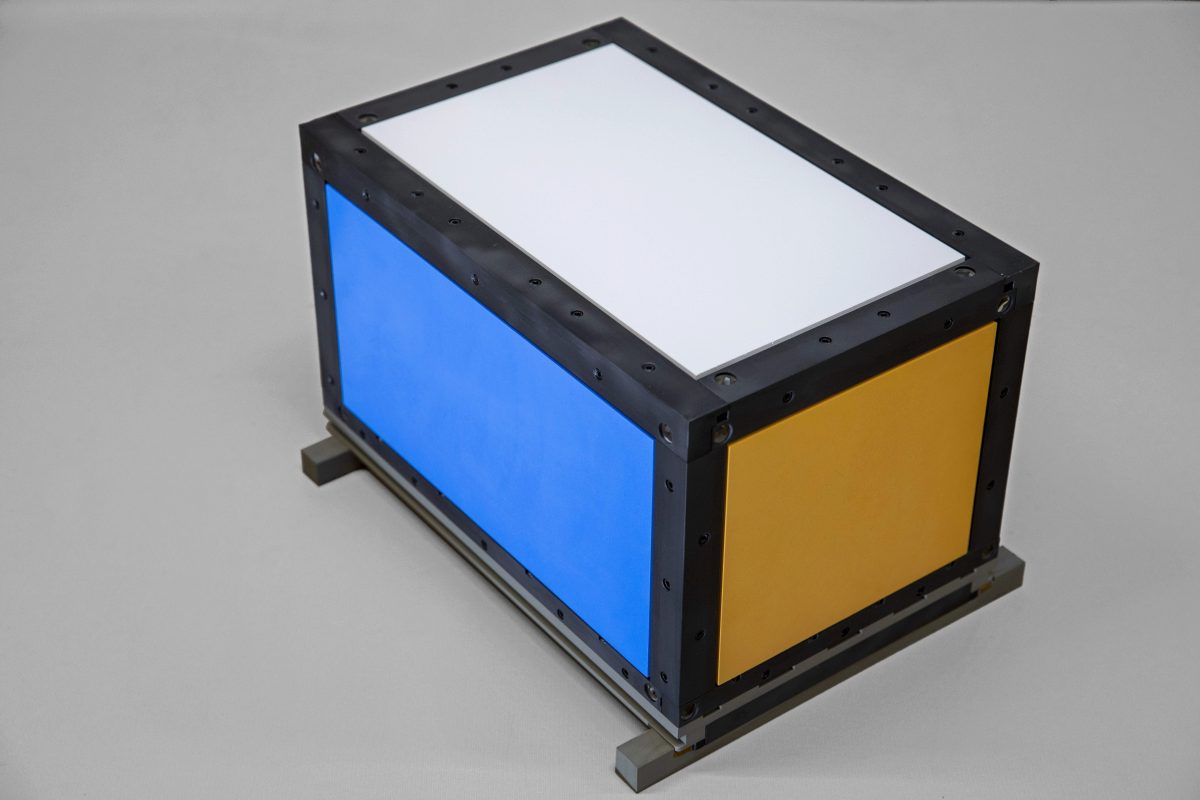
Remove Before Launch. This video shows OrCa's final testing in the SSDL before it was delivered in January. If you watched the live coverage on March 26, you know that, after an hour-and-a-half delay, the Atlas V rocket sailed flawlessly into space, launching OrCa approximately 29 minutes into its flight. We'll be checking in with Prof. Gunter and his team in the coming weeks to see how OrCa is doing.
On Thursday March 26, the U.S. Space Force will launch its first satellites aboard a ULA Atlas V rocket from Cape Canaveral. Gone will be the usual crowds of space fans that routinely witness these events, but there will be no dearth of excitement.
A virtual cheering section from Georgia Tech will be glued to the livestream, watching every moment.
 |
| Prof. Brian Gunter |
 |
| Dr. Chris Valenta |
The source of their intense enthusiasm is in the rocket's payload: the Orbital Calibration ("OrCa") mission, a 12U small sat that was designed, built, and tested in a little over six weeks by AE professor Brian Gunter, his students from the Space Systems Design Lab, and a team from GTRI led by co-PI Dr. Chris Valenta. Sponsored by the Air Force Research Lab's Space Vehicles Directorate, OrCa is intended to provide optical calibration capabilities that will improve the tracking and identification of resident space objects (RSOs) – orbiting objects that include natural and man-made objects (e.g. satellites, orbital debris).
OrCa will be launched as a rideshare together with the Advanced Extremely High Frequency (AEHF)-6 mission - the final satellite in the AEHF constellation. While most satellites are in low-Earth orbit (below 1,000 kilometers), OrCa will be in a geosynchronous transfer orbit (GTO)- a very elliptical orbit that extends out beyond 35,000 kilometers.
With its different colored panels and reinforced seams, Orca resembles a simple box. That simplicity belies a very deliberate and complex approach to the CubeSat's mission.
"The different colors on each of OrCa's panels have very consistent reflective properties, that were precisely measured prior to launch, so that we can accurately model what the satellite will look like from our ground-based telescope," said Gunter.
 |
| Byron Davis |
 |
| Sarah Demsky |
"The orientation of the satellite will be derived from ground-based images based on a combination of observed frequencies, since each panel has a difference color/reflectance. Each panel of the spacecraft also has corner cube retro-reflectors, so that it can be precisely tracked with ground-based laser ranging techniques. By having a well-characterized passive reflector on orbit, along with knowledge of its position and orientation, we will be able to improve our tracking and prediction methodologies. This, in turn, will improve our ability to track and predict the location of other RSOs.
"For example, if what we actually observe is slightly different than what we predict, then this may be the result of atmospheric effects, which we can then use to improve our atmospheric modeling."
OrCa’s highly reflective design will make it visible to a number of ground sensors, to include telescopes and laser ranging devices, as well as space-based sensors, across a variety of wavelength bands. The types of data obtainable from the mission include imagery, lightcurves, and spectral data, from which a number of
valuable experiments can be conducted in such areas as space object identification and track association, multispectral analysis, and low-light detection.
In January, Gunter's team handed over OrCa to the Space and Missile Systems Center’s (SMC) Launch Enterprise Mission Manifest Office (MMO) which delivered the smallsat to the Cape Canaveral Air Force Station (CCAFS), for integration on the AEHF-6 mission, just three weeks before the launch. It is one of only two satellites that will be launched by the Atlas V.
As excited as he is about the data that OrCa will provide, Gunter is at least that pleased with the skills, knowledge and work ethic that produced the 12U CubeSat in just over six weeks. A last-minute vacancy gave Tech the opportunity to step into the mission...if they could pull together everything by the deadline.
"That we were approved to step into the project so close to the launch date says volumes about the faith that people have in Georgia Tech's space program," said Gunter. "That we were actually able to build a satellite in six weeks, well, that's just incredible."
Both Gunter and Valenta were quick to point out that the OrCa mission would not have been possible without the responsiveness and unique capabilities of their combined teams. Before any of the work started, GTRI’s John Bunnell worked diligently to get the mission approved by all of the involved agencies. Byron Davis an AE doctoral student, performed most of the design and machining work, while undergraduate Sarah Demsky pitched in on the early phases of the design. The AE Machine Shop's “Red” Russell and Greg Rogerson were instrumental in helping the team meet the exacting requirements under tight deadlines. At GTRI, Megan Birch, Dr. Ryan Norris, and Dr. Greg Badura determined the optical design of OrCa, and characterized the satellite prior to delivery using a hyperspectral imager and a custom-made goniometer, which is a device that measures the bidirectional reflectance distribution function (BRDF) of an object. Having helped with the mission's preliminary analysis, AE graduate students Luke Renegar and Devin Wu now plan to be the first to gather initial observations of the satellite from AE’s 0.5m telescope facility.
 |
| The Deceptive Simplicity of Good Engineering. The brightly colored OrCa CubeSat was designed to take advanatage of the specific reflective qualities of each color. |